How And When To Harvest Vegetables For The Freshest Flavor Ever
Learn everything you need to know about how to harvest vegetables from your garden–including when to pick produce for the freshest flavor!
You’ve worked hard to get your vegetable garden in shape, but if you don’t know how and when to harvest vegetables, all your hard work might be for nothing. Whether you are new to vegetable gardening or an old hand, sometimes it’s difficult to know how and when to harvest vegetables.
Just like growing a successful vegetable garden is more difficult than one might think, harvesting is more complicated than beginners may believe. Vegetable picking is more than just pulling produce off a vine. Knowing how and when to harvest crops at their peak is tantamount to getting the best produce. Picking at the correct time can make the difference between a flavorful crop and produce that's practically unpalatable.
So how do you know when it’s time to harvest vegetables and how to pick different types of plants the right way? Read on to learn how to get the most delicious results.
Harvesting Basics
So what are you looking for to determine if a vegetable is ready for harvest? Well, it depends on the crop. You can pick some crops early and allow them to ripen on the counter, but only certain plants ripen after picking. Others you need to pick at maturity.
That said, there are a few harvesting basics that hold true for all crops. Pick your produce in the morning. This is when commercial farmers harvest crops. Picking in the morning helps produce stay crisp and fresh longer, whereas harvesting vegetables during the heat of the day tends to make them wilt. Pick crops when they are dry, after the dew dries.
If you can’t rouse yourself in the early morning, the next best time to pick is in the evening when the heat of the day has passed.
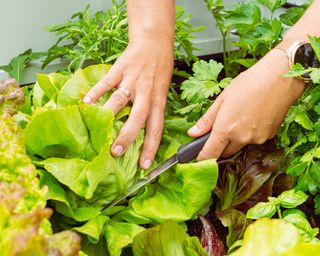
Be careful when harvesting. Damage to produce can open it up to disease leading to rot. Use a sharp knife or pruning shears if necessary. Harvest leafy greens from the outside leaves towards the inner leaves. This means picking the largest leaves first unless of course you wish to harvest an entire head.
Gardening tips, videos, info and more delivered right to your inbox!
Sign up for the Gardening Know How newsletter today and receive a free copy of our e-book "How to Grow Delicious Tomatoes".
Harvest long-producing crops like beans often. If the crop is allowed to go to full maturity, it will stop producing.
When to Harvest Vegetables
Each crop has a different harvest date. You can go by the maturity date listed on the seed packet information. This will give you a gist of when to harvest, but you should also look at the size, color, flavor, and aroma of a crop.
When to pick tomatoes, for instance, varies depending upon the variety. It is better to look for deeply colored fruit that is firm but yields slightly. Tomatoes are somewhat forgiving since you can pick them before they are completely ripe. Don't fall for the notion that vine-ripened tomatoes taste better. In actuality, ripening tomatoes after picking often provides better results.
Other crops are not as forgiving. Often, people think that crops are at their peak when they are fully mature. Too often this means the crop is picked when it has grown enormous and actually well past its prime.
The best time to harvest peas or pick green beans for the freshest flavor, for instance, is when pods are swollen but not bulging. When in doubt, shell a few and taste them. They should be sweet and tender, not bitter or tough.
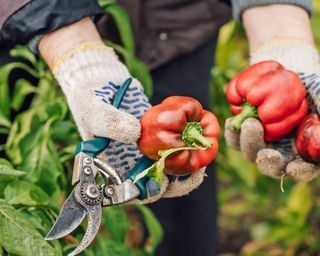
When to pick peppers can really impact the flavor. Bell peppers can change from green to red and get sweeter the longer you leave them to mature. Knowing when to pick hot peppers also makes a big difference in flavor and spiciness. If you want flaming hot peppers, let them mature on the plant. The longer they keep growing, the spicier they will be.
Veggies continue to improve or degrade after they are picked. Some crops are at their peak when allowed to ripen on the plant. You should pick others when they are fully mature. Corn, cucumbers, beans, okra, peas, and squash taste best if you harvest them before they are fully mature.
Corn is particular, though. Once it is ready to harvest, it begins to degrade after only 72 hours. The best time to harvest corn is when the kernels are plump and juicy and the silk is brown and dry. Puncture a kernel with your fingernail to see what color the juice is. If it is clear, it's too early. Wait until it's milky white.
How to Harvest Vegetables
When harvesting vegetables, you are looking for ripeness. Ripeness involves all of your senses, from smelling and tapping on melons to tell if they're ripe to eyeballing your peas for that perfect plumpness, to puncturing a corn kernel or popping a couple cherry tomatoes in your mouth.
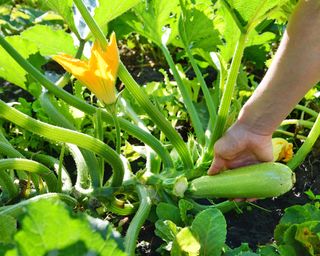
When you harvest your vegetable crops, always take care not to damage the crop. If a fruit or veggie does not easily give up its hold on a stem, it may not be ready to pick or you may need to snip it from the plant. Use clean shears or a sharp knife to harvest zucchini and pick different types of squash.
When harvesting potatoes and other root crops, use a pitchfork or spade to gently unearth your crop. You can do the same when harvesting onions or picking garlic. Just be careful not to damage any vegetables in the process. Cuts and bruises leave produce susceptible to rot.
Don’t leave your harvest outside too long. Bring it in where it is cooler to store properly. Some crops like, root vegetables and bulbs need to be cured before you can store or eat them. This helps them last longer so you can enjoy them all fall or winter.
Only harvest crops that are of high quality. Damaged produce may be diseased already and potentially expose you and your loved ones to a food borne illness.
How to Store Vegetables
Due to shipping and storage, commercially grown vegetables are often picked before they’re at their peak. Here the home gardener has an advantage. You have the ability to harvest when crops are in their prime then promptly and properly store the different types of vegetables from your garden.
To store your crops, pay attention to the temperature, moisture, and ventilation of the storage area. Some crops like sweet corn convert sugar to starch unless cooled immediately.
How much moisture or humidity a crop should be stored in depends on the crop. Leafy greens need a high relative humidity of about 95% while onions require a drier storage environment of 65-70%.
Ventilation is important to storage to facilitate air circulation which reduces the incidence of spoilage.
Long-Term Storage
There are three different options for long-term storage. Cool and dry with a relative humidity of 60% and temperatures between 50-60 F (10-16 C), cold and dry with a relative humidity of 65% and temperatures between 32-40 F (0-4 C) and cold and moist with a 95% relative humidity and temperatures between 32-40 F (0-4C).
Basements and root cellars are good areas of storage for crops like potatoes, onions, garlic, and winter squash. The refrigerator is ideal for leafy greens, ripe tomatoes, cucumbers, and peppers.
Know that the lifespan of your produce dwindles up to 25% for every 10 F (-12 C) increase in temperature.
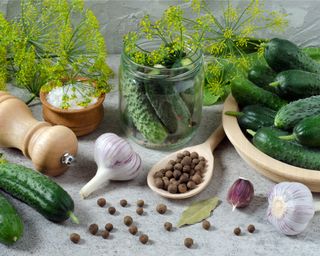
You can also preserve vegetables from your garden to make them last until the next growing season. Pickling, canning, and freezing are all easy ways to save your harvest to enjoy later.
Frequently Asked Questions
What vegetables are harvested in fall?
Vegetables you can harvest in fall include winter squash, carrots, beets, kale, turnips, rutabagas, Brussel sprouts and potatoes. A second sowing can also produce another round of cauliflower, cabbage, leafy greens, broccoli, bush beans, cucumbers, and radishes.
What vegetables can you continuously harvest?
There are several delicious cut and come again crops you can continuously harvest all season. These include leafy greens, beans, cucumbers, indeterminate tomatoes, okra, peppers, melons, and summer squash.

Amy Grant has been gardening for 30 years and writing for 15. A professional chef and caterer, Amy's area of expertise is culinary gardening.
- Laura WaltersContent Editor
- Amy DraissDigital Community Manager
-
 Best Tomatoes For Containers: 10 Tastiest Varieties For Plentiful Produce In Compact Areas
Best Tomatoes For Containers: 10 Tastiest Varieties For Plentiful Produce In Compact AreasThese are the best tomatoes for containers that prove you don't need to have a large space or elaborate garden to grow delicious produce.
By Bonnie L. Grant
-
 Ultimate Potted Flowers For Spring: 8 Brilliant Blooming Options for Spring Containers
Ultimate Potted Flowers For Spring: 8 Brilliant Blooming Options for Spring ContainersCelebrate the most uplifting of seasons with the most dazzling container flowers imaginable. Here, we present some of the loveliest potted flowers for spring…
By Tonya Barnett
-
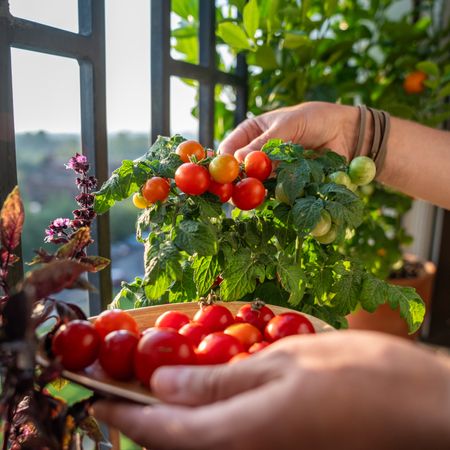 Best Tomatoes For Containers: 10 Tastiest Varieties For Plentiful Produce In Compact Areas
Best Tomatoes For Containers: 10 Tastiest Varieties For Plentiful Produce In Compact AreasThese are the best tomatoes for containers that prove you don't need to have a large space or elaborate garden to grow delicious produce.
By Bonnie L. Grant
-
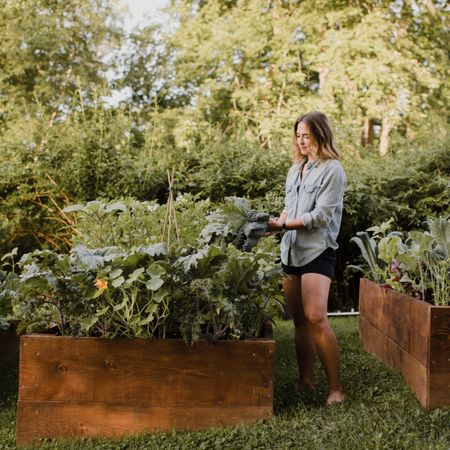 Raised Bed Garden Layout Ideas To Maximize Your Vegetable Harvest
Raised Bed Garden Layout Ideas To Maximize Your Vegetable HarvestCurious how to maximize your vegetable garden this year? Try these raised bed layout ideas and tips to get the most out of your space.
By Teo Spengler
-
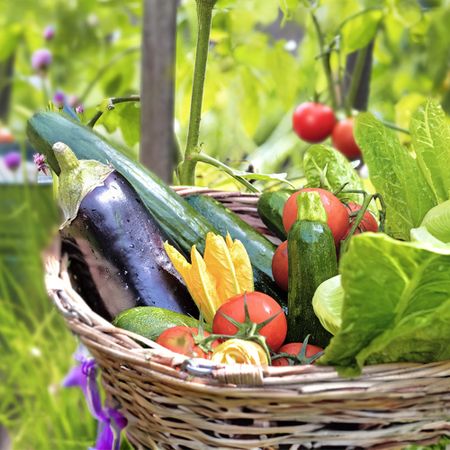 7 Best Vegetables To Plant In February – And Start Harvesting From Early Spring
7 Best Vegetables To Plant In February – And Start Harvesting From Early SpringGet a head start on your garden with these delicious veggies. Plant now and you can begin enjoying home-grown harvests sooner than you think.
By Mary Ellen Ellis
-
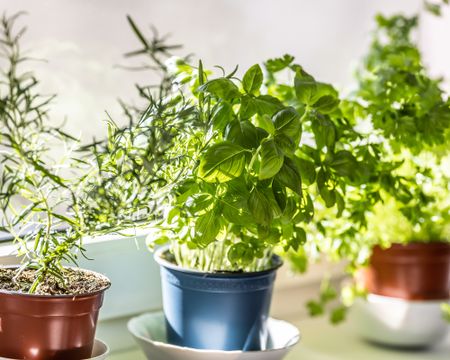 How To Grow A Windowsill Full Of Veggies This Winter, According To A Top Gardening Expert
How To Grow A Windowsill Full Of Veggies This Winter, According To A Top Gardening ExpertAward-winning journalist and climate-resilient gardening expert Kim Stoddart reveals her top plant picks and tips for a productive winter windowsill garden.
By Kim Stoddart
-
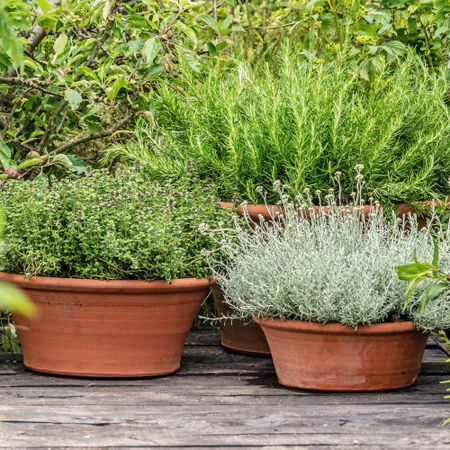 7 Perennial Herbs Perfect For Pots – Enjoy Aromatic Patio Harvests Year After Year
7 Perennial Herbs Perfect For Pots – Enjoy Aromatic Patio Harvests Year After YearDiscover the best perennial herbs to grow in pots. Ideal for small spaces, these low-maintenance plants offer year-round flavor and greenery on your patio.
By Bonnie L. Grant
-
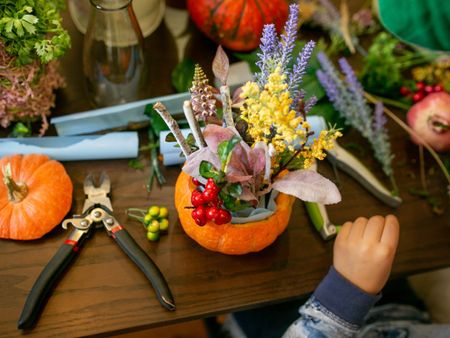 Do-It-Yourself Floral Pumpkin Centerpiece
Do-It-Yourself Floral Pumpkin CenterpieceCan you believe this pretty pumpkin centerpiece was made with just $13 worth of supplies? Plus, it was quick and easy.
By Amy Draiss
-
 9 Fun Things To Do With Pumpkins That Are Past Their Prime
9 Fun Things To Do With Pumpkins That Are Past Their PrimeWondering what to do with your pumpkin after the Halloween fun is over? Learn what to do with your pumpkins when you are done decorating with them.
By Teo Spengler
-
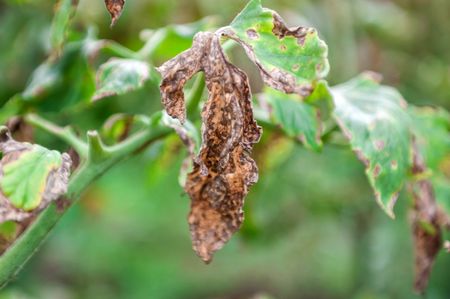 Tomato Verticillium Wilt Control – How To Treat Tomatoes With Verticillium Wilt
Tomato Verticillium Wilt Control – How To Treat Tomatoes With Verticillium WiltVerticillium wilt can be a devastating infection for a tomato crop. The best way to avoid it is to use resistant tomato varieties. It is also important to know the signs of the disease to avoid spreading it from one area of your garden to another. Learn more in this article.
By Mary Ellen Ellis
